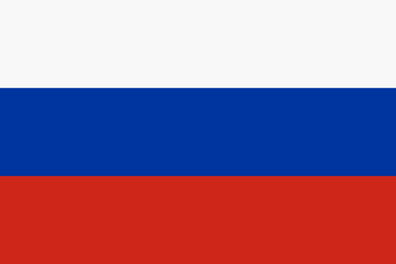Donate to Support Supercluster
Your support makes the Astronaut Database and Launch Tracker possible, and keeps all Supercluster content free.
SUPPORTSupercluster on Patreon
Your support makes the Astronaut Database and Launch Tracker possible, and keeps all Supercluster content free.
SUPPORTThis goes
to space
Crew-9 Dragon Freedom
NASA Commander Nick Hague and Roscosmos mission specialist Aleksandr Gorbunov will launch aboard SpaceX's Dragon Freedom spacecraft, which previously flew Crew-4, Axiom Mission 2 and Axiom Mission 3, from Launch Complex 40 at Cape Canaveral Space Force Station in Florida.
Once aboard the space station, Hague and Gorbunov will become members of the Expedition 72 crew and perform research, technology demonstrations, and maintenance activities. The pair will join NASA astronauts Don Petitt, Butch Wilmore, Suni Williams, as well as Roscosmos cosmonauts Alexey Ovchinin and Ivan Vagner.
Initially, the Crew-9 mission was set to carry four crew members — astronauts Zena Cardman, Nick Hague, and Stephanie Wilson, with cosmonaut Aleksandr Gorbunov. However, due to technical issues with Boeing's Starliner, Crew-9 Dragon will have to launch with two open seats that will be used to bring astronauts Butch Wilmore and Suni Williams back to Earth in February of 2025.
Dragon Vehicle Statistics
Total launches: 47
Visits to the ISS: 42
Total reflights: 26
Technical Specifications
Height: 8.1 m / 26.7 ft
Diameter: 4 m / 13 ft
Capsule volume: 9.3 m³ / 328 ft³
Trunk volume: 37 m³ / 1300 ft³
Launch Payload Mass: 6,000 kg / 13,228 lbs
Return Payload Mass: 3,000 kg / 6,614 lbs
The Crew Dragon spacecraft has carried 52 humans into orbit since May 2020
Mission Overview
After liftoff, Dragon will accelerate to approximately 17,500 mph to dock with the space station.
Once in orbit, flight control teams from NASA’s Mission Control Center at the agency’s Johnson Space Center in Houston and the SpaceX mission control in Hawthorne, California, will monitor a series of automatic maneuvers that will guide Dragon to the forward-facing port of the station’s Harmony module. The spacecraft is designed to dock autonomously, but the crew can take control and pilot manually if necessary.
After docking, Expedition 71 will welcome Hague and Gorbunov inside the station and conduct several days of handover activities with the departing astronauts of NASA’s SpaceX Crew-8 mission. After a handover period, NASA astronauts Matthew Dominick, Michael Barratt, Jeanette Epps, and Roscosmos cosmonaut Alexander Grebenkin of Crew-8 will undock from the space station and splash down off the coast of Florida.
Crew-9 will conduct new scientific research to prepare for human exploration beyond low Earth orbit and benefit humanity on Earth. Experiments include the impact of flame behavior on Earth, studying cells and platelets during long-duration spaceflight, and a B vitamin that could reduce Spaceflight-Associated Neuro-ocular Syndrome. They’ll also work on experiments that benefit life on Earth, like studying the physics of supernova explosions and monitoring the effects of different moister treatments on plants grown aboard the station. These are just a few of over 200 scientific experiments and technology demonstrations taking place during their mission.
While aboard the orbiting laboratory, Crew-9 will welcome two Dragon spacecraft, including NASA’s SpaceX’s 31st commercial resupply services mission and NASA’s SpaceX Crew-10, and two Roscosmos-led cargo deliveries on Progress 90 and 91.
In February, Hague, Gorbunov, Wilmore, and Williams will climb aboard Dragon and autonomously undock, depart the space station, and re-enter Earth’s atmosphere. After splashdown off Florida’s coast, a SpaceX recovery vessel will pick up the spacecraft and crew, who then will be helicoptered back to shore.
Caption courtesy of NASA
On this
rocket
Falcon 9 with Dragon (Crew)
Falcon 9 is a reusable, two-stage rocket designed and manufactured by SpaceX for the reliable and safe transport of people and payloads into Earth orbit and beyond.
Falcon 9 is the world’s first orbital-class reusable rocket.
Stats
Total launches: 428
Total landings: 383
Total reflights: 357
The Falcon 9 has launched 52 humans into orbit since May 2020
Specs
Height: 70 m / 229.6 ft
Diameter: 3.7 m / 12 ft
Mass: 549,054 kg / 1,207,920 lb
Payload to Low Earth Orbit (LEO): 22,800 kg / 50,265 lb
Payload to Geostationary Transfer Orbit (GTO): 8,300 kg / 18,300 lb
Payload to Mars: 4,020 kg / 8,860 lb
On January 24, 2021, Falcon 9 launched the first ride-share mission to Sun Synchronous Orbit. It was delivering a record-setting 143 satellites to space. And while this was an important mission for SpaceX in itself, it was also the moment Falcon 9 overtook United Launch Alliance’s Atlas V for the total number of consecutive successful launches.
SpaceX’s Falcon 9 had become America’s workhorse rocket, launching 31 times in 2021. It has already beaten that record this year, launching almost an average of once a week. While most of the launches deliver Starlink satellites to orbit, the company is still launching the most commercial payloads to orbit, too.
Falcon 9 is a medium-lift launch vehicle, with the capability to launch over 22.8 metric tonnes to low earth orbit. Unlike any other rocket, its first stage lands back on Earth after separating from its second stage. In part, this allows SpaceX to offer the cheapest option for most customers with payloads that need to reach orbit.
Under its ride-share program, a kilogram can be placed in a sun-synchronous orbit for a mere 1.1 million dollars, far cheaper than all other currently operating small satellite launch vehicles.
The reusability and fast booster turnaround times have made Falcon 9 the preferred choice for private companies and government agencies. This has allowed SpaceX to capture a huge portion of the launch market.
Protecting the Crew
On the launch pad, the crew will board Dragon prior to fueling of the rocket.
Dragon's abort system will be armed and ready to pull the crew away from Falcon 9 in the event a critical issue develops during fueling.
The launch to a 200 x 200 km orbit will take just under 9 minutes.
Dragon and its crew will then separate from the Falcon 9 second stage 11 minutes after liftoff from the Kennedy Space Center.
Photo courtesy of Erik Kuna for Supercluster.
From this
launch site
SLC-40 - Cape Canaveral Space Force Station, Florida
Space Launch Complex 40 (SLC-40) is one of two launch sites leased by SpaceX at Cape Canaveral Space Force Station (CCSFS) in Florida, specifically designed for preparing and launching Falcon 9 rockets. Constructed in the early 1960s, SLC-40 was initially used for 55 Titan III and Titan IV rocket launches, including the Cassini-Huygens mission to Saturn. The pad was active from June 18, 1965, to April 30, 2005.
SpaceX began leasing SLC-40 in 2007, converting it to support Falcon 9 rockets. The pad was first upgraded to accommodate the original version of Falcon 9 and later received another upgrade in 2013 to handle the larger, reusable Falcon 9 rocket. On September 1, 2016, an explosion during a Falcon 9 fueling test caused severe damage to the pad. It was rebuilt rapidly, with construction completed in just 10 months, from mid-February to late November 2017. SLC-40 resumed operations with the successful launch of a Dragon capsule to the International Space Station on December 15, 2017.
After adding a crew access arm to the launch tower, SpaceX launched their first crewed mission from SLC-40 on Saturday, September 28th 2024 for NASA's Crew-9 mission to the International Space Station.
Under SpaceX’s management, SLC-40 has been the site of numerous significant missions. Notable launches include the first all-commercial Dragon mission to the International Space Station, NASA’s DSCOVR mission, the Transiting Exoplanet Survey Satellite (TESS) for NASA and MIT, the first satellite for Turkmenistan, the classified Zuma mission for Northrop Grumman and the U.S. government, the first GPS-III satellite, and the Beresheet lunar lander for Israel. Additionally, in September 2024, SLC-40 will host its first crewed launch with SpaceX’s Crew-9 mission, marking a new milestone for the pad.
Cape Canaveral is a major launch site with four currently active launch pads for Atlas V, Delta IV Heavy, Falcon 9, and Minotaur rockets. Located on Florida’s east coast, it offers extensive access to space for a variety of missions, including those targeting the Space Station, Geostationary Earth Orbit, the Moon, interplanetary destinations, and polar trajectories. The site’s location ensures that launches occur over the open Atlantic Ocean, minimizing risks to populated areas.
Cape Canaveral is often confused with or referred to alongside NASA’s Kennedy Space Center on Merritt Island. While they are separate installations, both play pivotal roles in the U.S. space program. Cape Canaveral has a storied history of significant space missions, including the launch of the first U.S. Earth satellite, Explorer 1, in 1958; the first U.S. astronaut, Alan Shepard, in 1961; the first U.S. astronaut in orbit, John Glenn, in 1962; the launch of the first two-person U.S. spacecraft, Gemini 3, in 1965; and the first U.S. uncrewed lunar landing mission, Surveyor 1, in 1966.
SLC-40 and Cape Canaveral continue to be integral to SpaceX’s ambitious launch schedule and the broader U.S. space program, supporting a wide range of missions and contributing to advancements in space exploration.
Photo courtesy of Jenny Hautmann for Supercluster
Booster will
land here
Landing Zone 1 (LZ-1)
LZ-1
Landing Zone 1 (LZ-1) is an 86 meter wide circular landing pad at the Cape Canaveral Space Force Station and is one of two SpaceX booster landing pads at the Florida spaceport.
Built on former Launch Complex 13, LZ-1 was the site of SpaceX's first successful landing and recovery of a Falcon 9 on the ORBCOMM-2 mission in December 2015. Since then, it has hosted 16 landings.
The landing pad, as well as its twin, LZ-2 located a few dozen meters away, can support both single landings of a Falcon 9 or simultaneous landings of the two Falcon Heavy side boosters.
Photo: Jenny Hautmann for Supercluster
Dragon
docks here
ISS - Harmony Module (Forward)
ISS - Harmony forward
The Harmony module, also known within NASA as Node-2, was launched to the ISS in October 2007 on the STS-120 mission of Shuttle Discovery.
Harmony serves as the gateway between the U.S. scientific and living modules and ESA's Columbus laboratory and JAXA’s Kibo lab complex.
The module is equipped with two docking ports for U.S. crew (Dragon and Starliner) and cargo (Dragon) spacecraft and also has one berthing port that can be used for either Northrop Grumman's Cygnus or Japan's HTV cargo crafts.
Photo: The Harmony module, with the forward docking port visible. Credit: NASA
Track station
here
International Space Station
Download the Supercluster app to track spacecraft traffic and view crewmembers aboard the International Space Station and China’s Tiangong Space Station.
Alternatively, you can use the web version of our Stations Dashboard on Supercluster's website.
We now track "Arrivals and Departures" for both stations through a new "Timetable" feature, covering crew rotations and cargo resupply missions.
You can also switch between the ISS and Tiangong to see their relative positions over Earth on our mini-map.
A recent update allows users to enable push alerts for notifications when space stations pass over their location.
Grab ISS
gear
ISS PItcrew Short Sleeve
Official Pit Crew.
4.76 Miles per Second.
Black short sleeve cotton T-shirt. Fits true to size.
Click here to purchase one from our shop. Supplies are limited.
Here's where to view SpaceX Crew-9
Viewing Sites
- Alan Shepard Park
- A. Max Brewer Bridge
- Apollo Saturn V Center / Banana Creek
- Cherie Down Park
- Cocoa Beach Pier
- Jetty Park
- Kennedy Space Center Visitor Complex
- LC-39 Observation Gantry
- Lori Wilson Park
- Playalinda Beach
- Rotary Riverfront Park
- Sand Point Park
- Sidney Fischer Park
- Spaceview Park
Know Before You Go
SLC-40 was built in the early 1960s and hosted its first launch on June 18, 1965. Since then, it has launched nearly 100 missions on the Titan III, Titan IV, and Falcon 9 rockets.
During the Titan rocket era, SLC-40 was used to launch two interplanetary missions: Mars Observer to Mars and Cassini-Huygens to Saturn.
With the Falcon 9, the pad became the first Cape Canaveral site to host a launch to the International Space Station.
The pad is located on historic Cape Canaveral Air Force Station, FL - the primary launch center for the United States.
The Florida launch site handles the vast majority of U.S. launches every year and has been the starting point of numerous history-making missions for the United States, including:
- First U.S. Earth satellite in 1958
- First U.S. astronaut in 1961
- First U.S. astronaut in orbit in 1962
- First two-person U.S. spacecraft 1965
- First three-person U.S. spacecraft in 1968
GET THE SUPERCLUSTER APP
THE SUPERCLUSTER PODCAST
A podcast exploring the amazing milestones that changed space history, the wildest ideas that drive our future, and every development in this new Golden Age of Space.
Donate to support
Your support makes the Astronaut Database and Launch Tracker possible, and keeps all Supercluster content free.
SupportCOPYRIGHT 2021 SUPERCLUSTER LLC





 In Space
In Space









